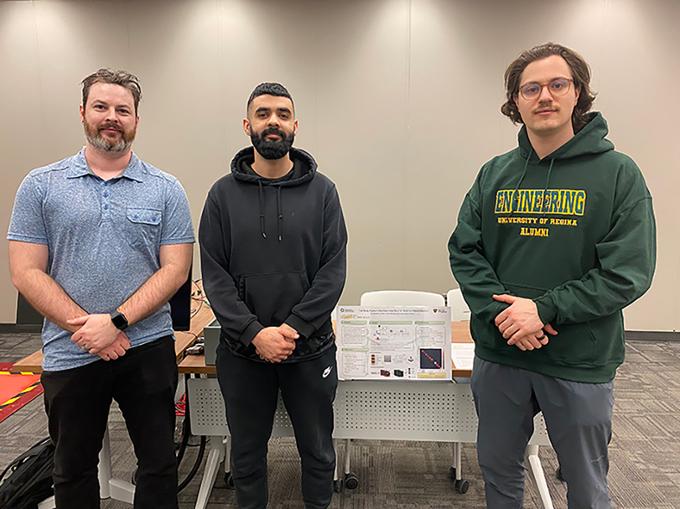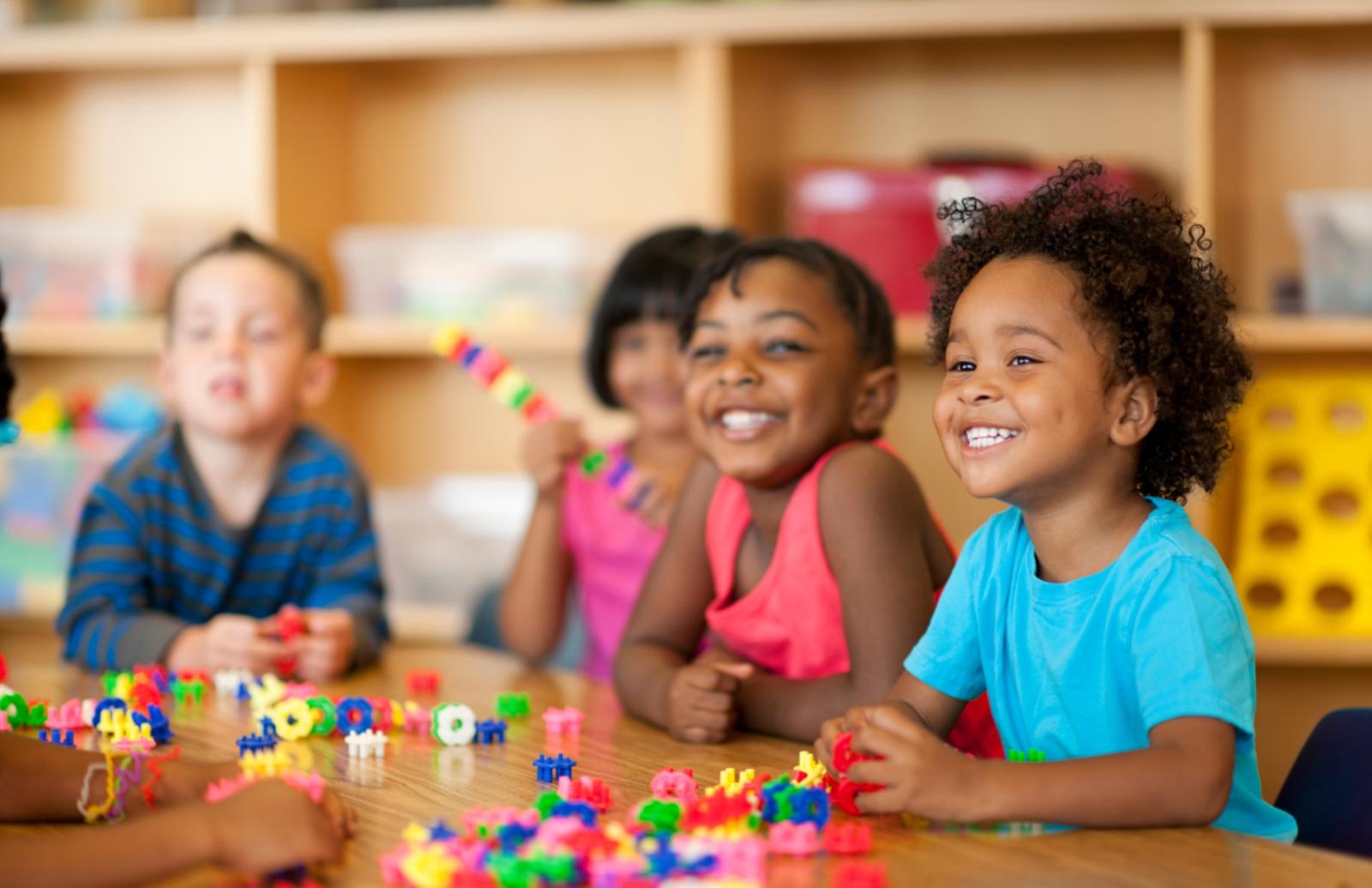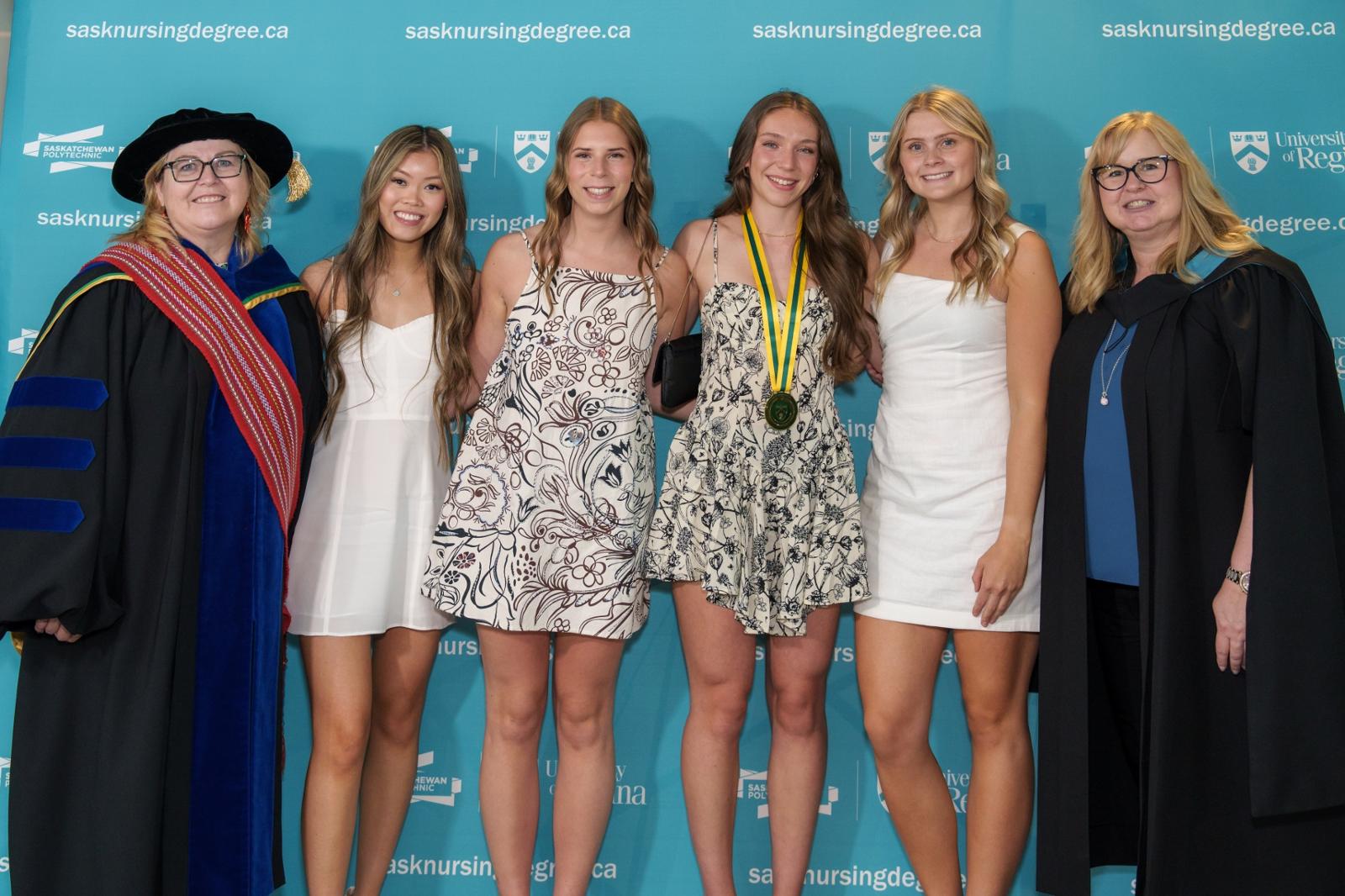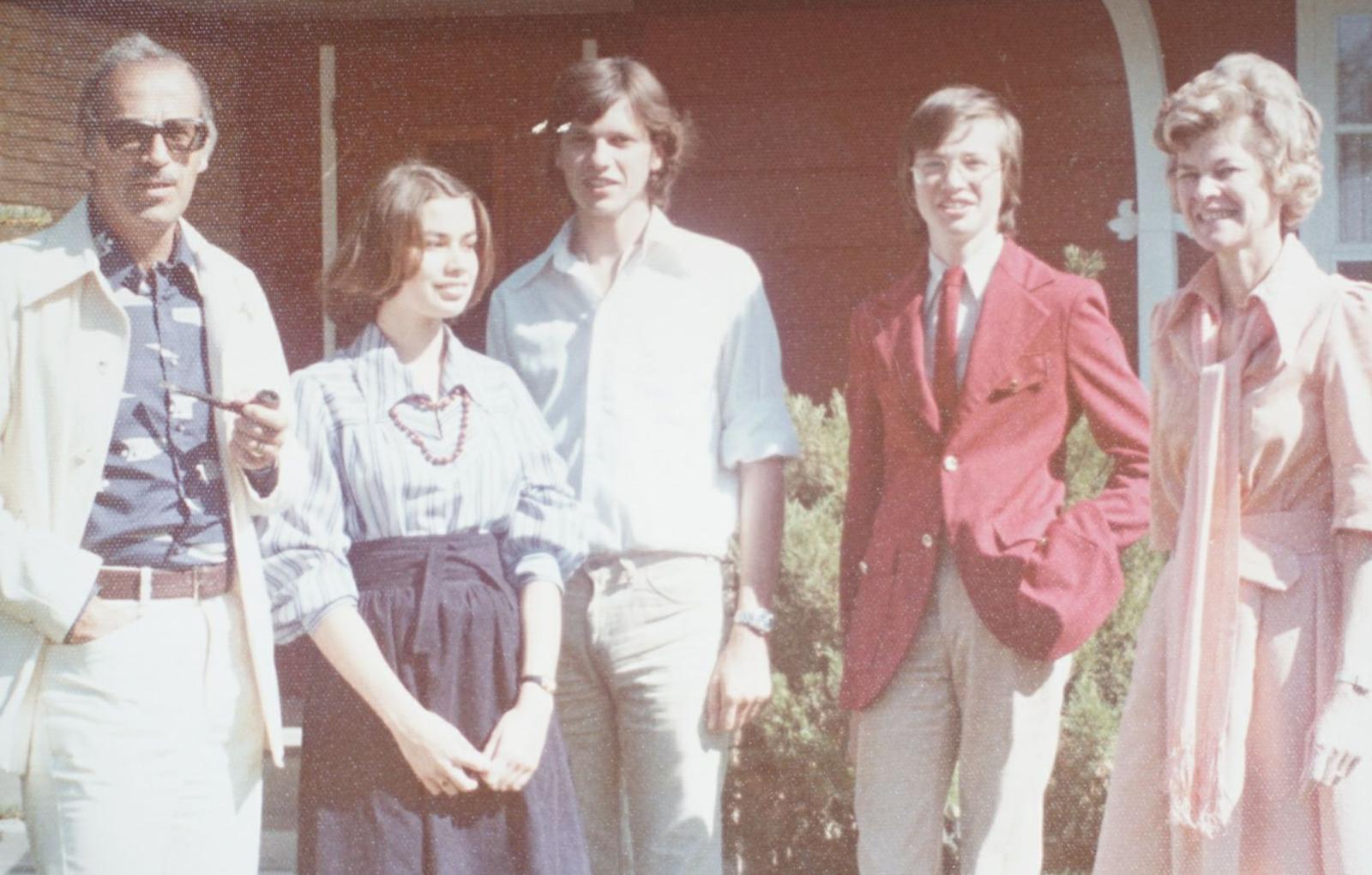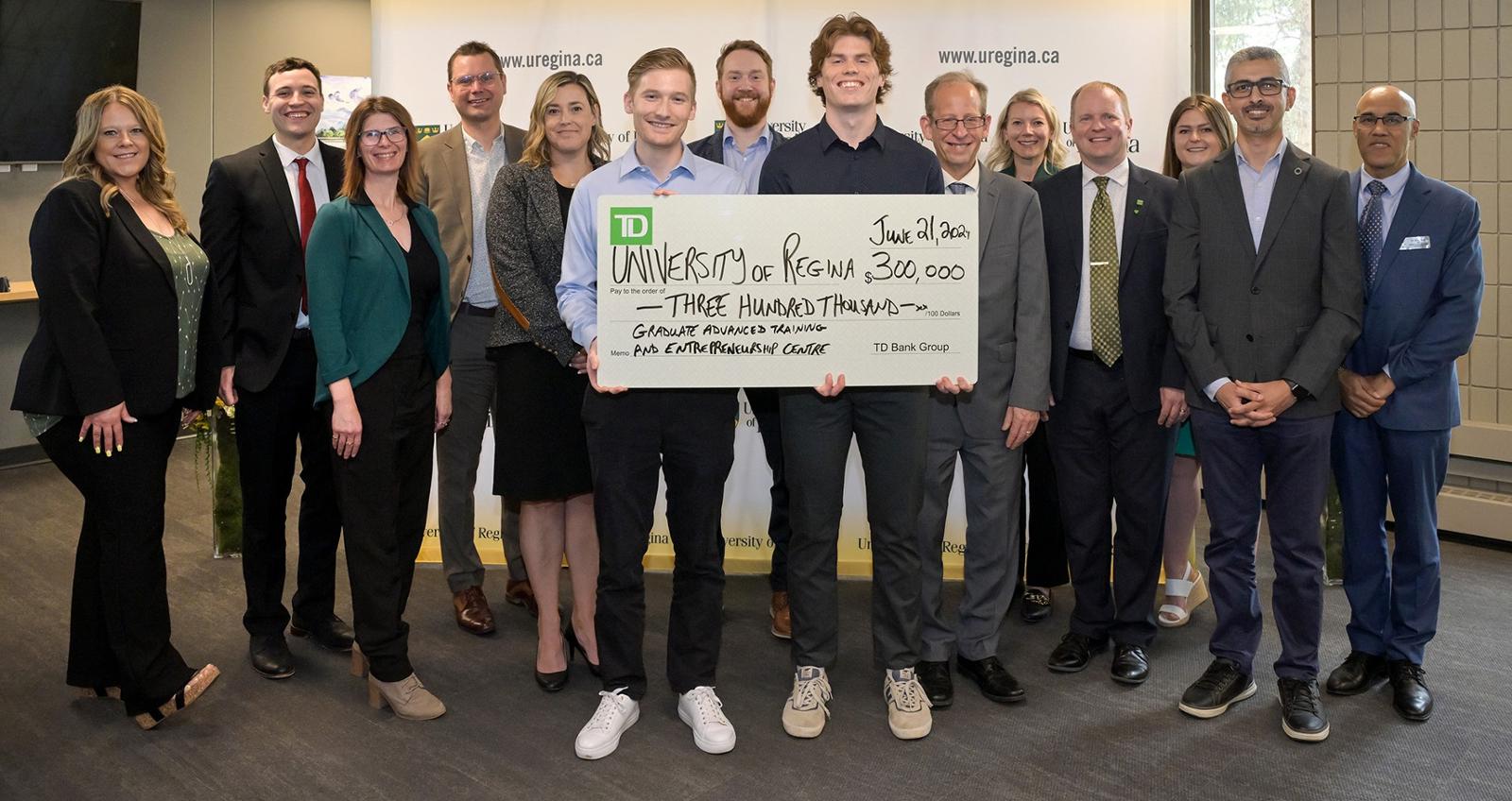University of Regina students in their fourth year with the Faculty of Engineering and Applied Science had their ingenuity on display on Saturday at the Faculty’s annual Capstone Project Day.
“Capstone Project Day is an event that allows our students to demonstrate how they’ve applied hands-on learning to real-world problems and challenges,” said Dr. Phillip Choi, Dean of the Faculty of Engineering and Applied Science. “We’re proud of what our students were able to achieve with their projects and we are excited for them to apply the skills they’ve learned into their fields of choice after graduation.”
Students studying Electronic Systems, Environmental Systems, Industrial Systems, Petroleum Systems and Software Systems presented their projects.
Industrial Systems Engineering
Among the Industrial Systems Engineering students at Project Day were Andrew Rowe, Chance Smith, Dawson Halstead and Erik DeRosier and their project, Static Intermixer for Blended Co-Extrusion Based 3D-Printing.
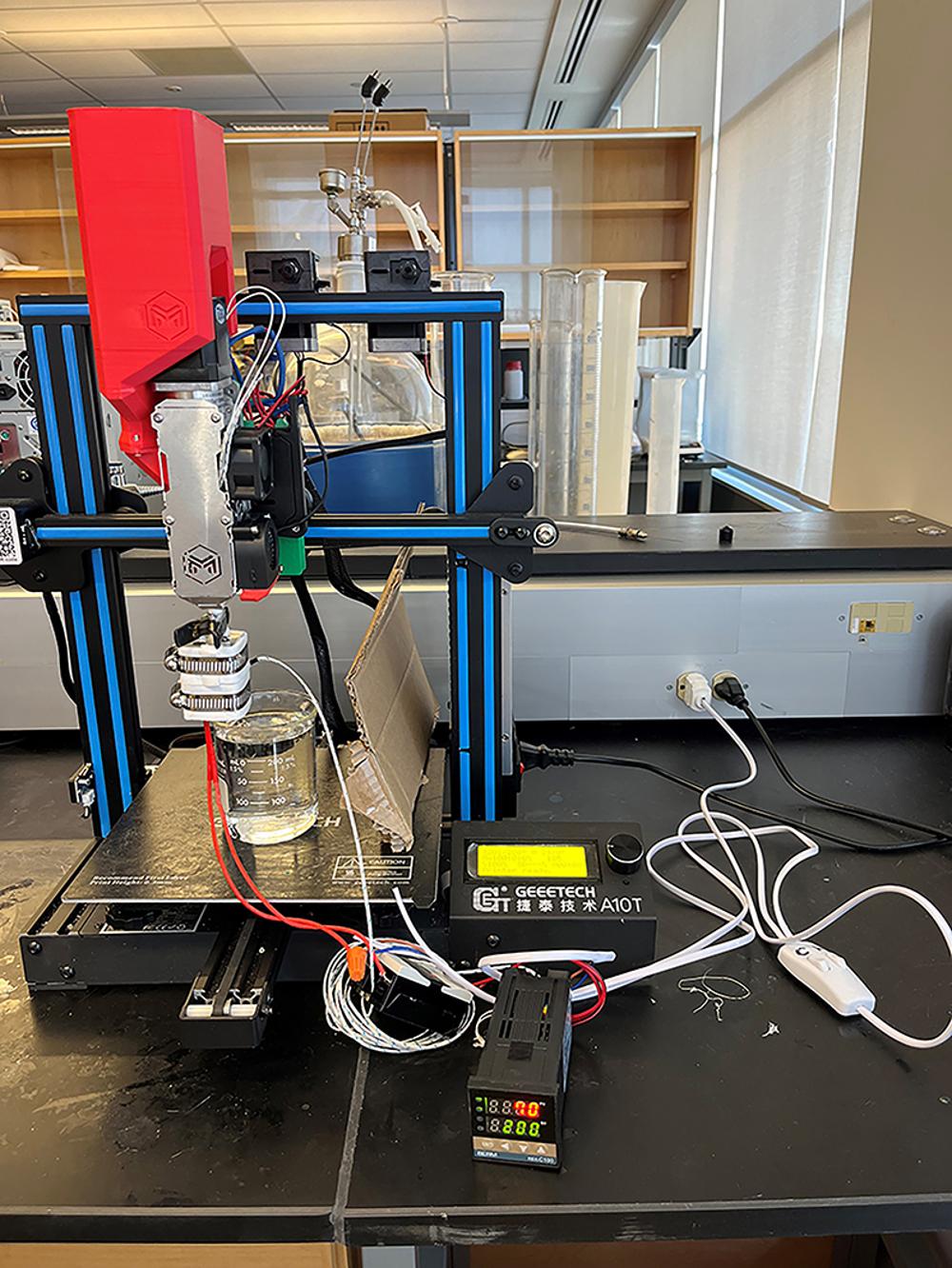
The group’s experimental setup in the lab, which includes an external heater, their designed mixing chamber and the auger based 3D printer. Photo: Andrew Rowe, Chance Smith, Dawson Halstead and Erik DeRosier
“There is two main problem areas with regards to additive manufacturing – one being the speed of printing – and the other is the print material availability,” Smith said. “You’re limited in plastic filament by what’s offered by manufacturers and currently no mixer exists where you can mix two different kinds of plastics in a streamline extrusion process. Our project promotes mixing and eliminates the need for filament, giving the user broader flexibility, it will saves costs, and hopefully increase the variety of mechanical properties which can be obtained by 3D printing.”
When using an auger-based 3D printer, pellets are inserted into a hopper, and an auger system drives melted pellets to be extruded on the way down into the printer. The group created a mixing geometry and chamber, which screws on to the bottom of a 3D printer and blends materials together.
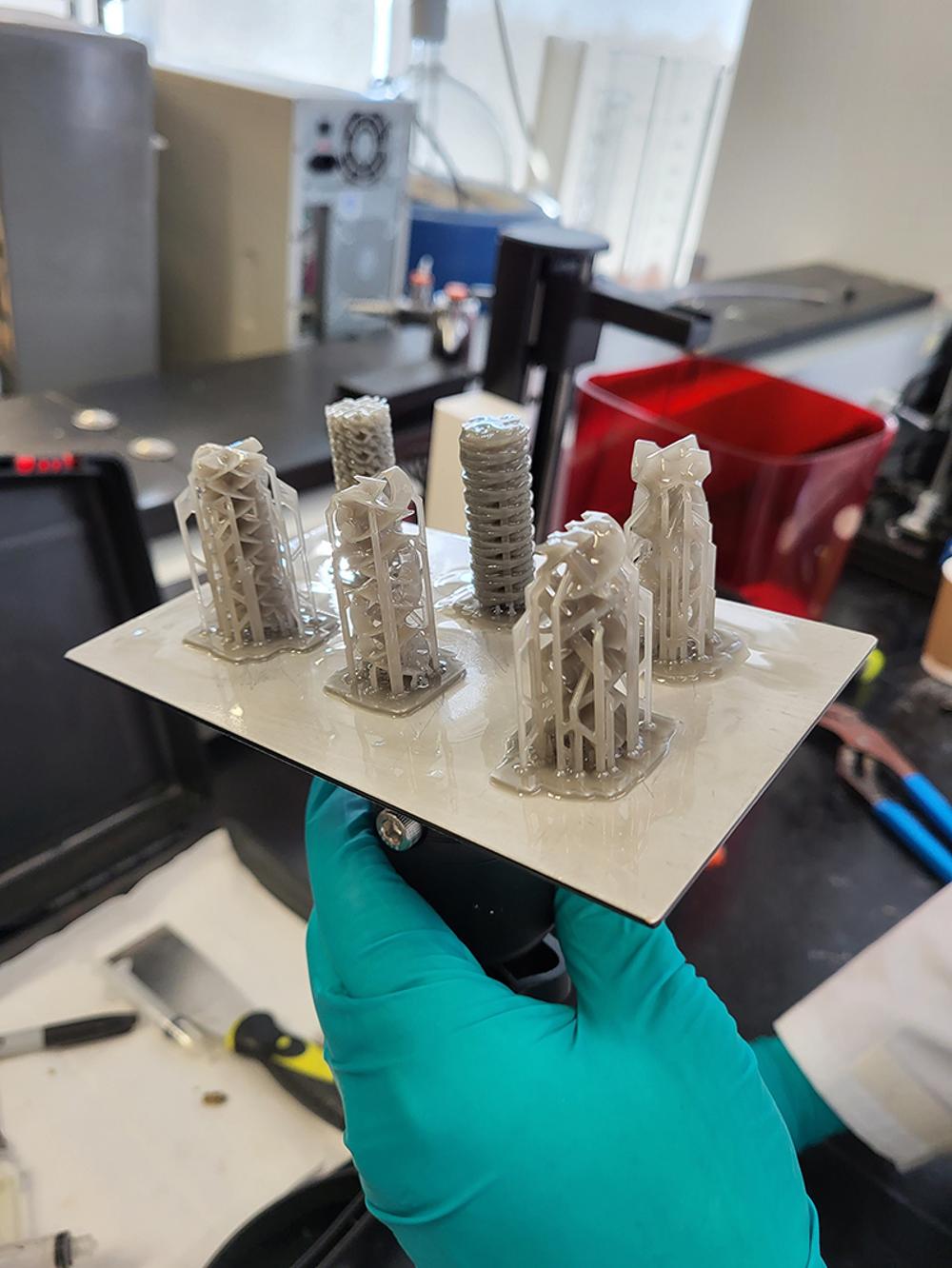
Raw thermal resin prints of all the group’s designed intermixers. Photo: Andrew Rowe, Chance Smith, Dawson Halstead and Erik DeRosier
It’s a difficult project because there is no prior research into it and no one has successfully achieved static mixing of pellets,” said DeRosier. “This is something we are all interested in and motivated to do it because it can make a difference.”
Electronic Systems Engineering
For their project, Full Body Human-Machine Interface for Balance Rehabilitation, Electronic Systems Engineering students Isaac Labrie-Boulay, Harith Abdulkareem, and Benjamin Pullar teamed up with researchers from the Faculty of Kinesiology and Health Studies to develop a human-machine interface system for virtual reality games used for balance rehabilitation.
“For me, engineering related to the medical field has always been the most fascinating because you’re not doing medical work, and from an engineering perspective, it’s something different than what a doctor does,” Abdulkareem said. “A doctor knows what’s going on with the patient but the engineer is providing the tool to the doctor.”
A doctor knows what’s going on with the patient but the engineer is providing the tool to the doctor. Electronic Systems Engineering student Harith Abdulkareem
The process is intended to be non-intrusive, meaning no sensors are attached to the patient. How it works is the patient would stand on a force-sensitive mat that the team developed. A camera is used to capture the movements of the patient and they are mapped to an analog joystick. Data from both subsystems are fed as inputs for a video game, with the goal of the project being to test the viability of utilizing video games for increasing exercise retention.
To explain the concept via Mario Kart, Labrie-Boulay said after your movements are mapped and your data is inputted into the video game, you could control the racer using pressure on the mat. For instance, you could drop a banana when you do a squat.
Interested in participating in Capstone Project Day and becoming an engineer? Check out all our Engineering Programs.
“Working with a different faculty is difficult because most of the projects you do, you get decent parameters on what you need, so it was interesting forming our own specifications – we defined the project and then worked on the details,” said Pullar. “The project was interesting because you don’t do it in class and you’re not just implementing what was in the textbook but the real-world application for it and then weigh out different methods that can do the same thing. It was a really good experience figuring out what was the best way to approach it.”
Software Systems Engineering
Having moms who developed foot problems served as motivation for Software Systems Engineering Xiao Chu Zhao (Jack) and Ahras Ali, who created a mobile app Achilles that helps people manage their foot health in a simple and accessible way. The user can upload pictures of their feet or answer a questionnaire or do both, and will receive a general diagnosis based on their symptoms and suggested treatment methods. The two worked in consultation with a podiatrist to create the questionnaire and develop the diagnoses.
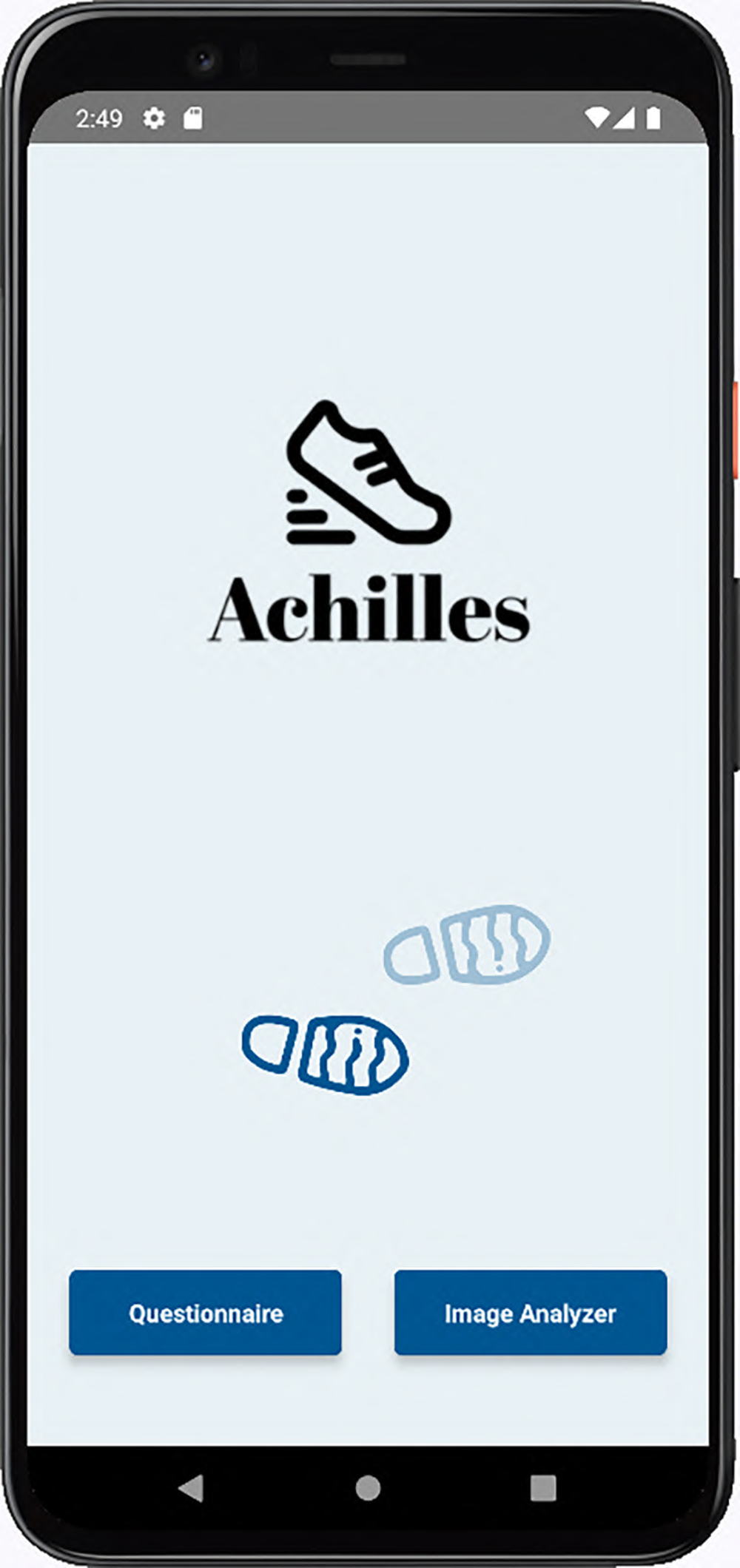
“You don’t always pay attention to your feet until the pain is starting, and when the pain is starting, that signifies that it’s getting to be too late,” Zhao said. “For the app, if people are using it and it works well, I think that’s one of the greatest rewards as a software developer, to see someone use their app and to appreciate it and find function in it.”
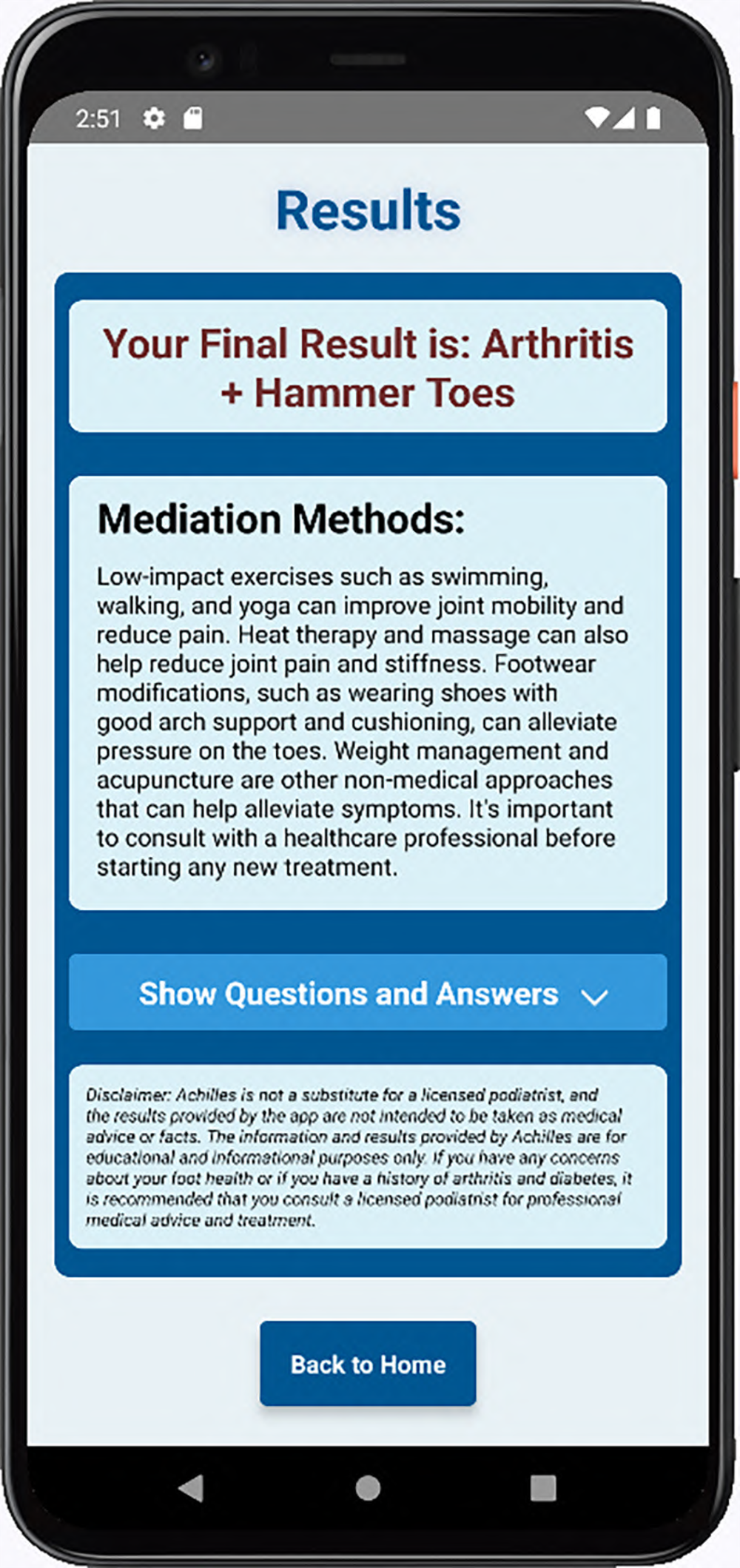
The app provides users a diagnosis based on photos they can submit or a questionnaire they can take. Photo: Xiao Chu Zhao (Jack) and Ahras Ali
Creating the model for the app using artificial intelligence was a daunting task and one they had to learn from scratch.
“A.I. scared me, but when we took this project on and started diving deeper into it, it was ok,” Ali said. “Once I jumped in, it was about making use of it and training it to do what you wanted and then you get the results you want. Instead of a test, this is an actual application that we can show companies and employers what we’ve been able to accomplish and show that we have the skills that they are trying to apply in their industry.”
Instead of a test, this is an actual application that we can show companies and employers what we’ve been able to accomplish and show that we have the skills that they are trying to apply in their industry. Software Systems Engineering student Ahras Ali
Fellow software engineer Adam Tilson BASc’17, who is now a lab instructor with the faculty, knows first-hand the challenge Project Day presents but also how valuable the experience is.
“Capstone Project Day is an awesome opportunity for students to do some independent learning, as well as apply the concepts they learned in the various courses throughout the degree,” he said. “I have enjoyed seeing the student’s projects over the years, as a student, as a reviewer, and later as an instructor – from games to web applications to machine learning projects, there has been lots of creativity and hard work on display. The capstone experience leaves you with the skills to transition into the workforce with confidence and competence.”
Banner photo: Isaac Labrie-Boulay, Harith Abdulkareem, and Benjamin Pullar
About the University of Regina
Set in the heart of the Canadian prairies we are a comprehensive, mid-sized university where the opportunities are as limitless as the horizon. Our campuses are on Treaty 4 and 6 - the territories of the nêhiyawak, Anihšināpēk, Dakota, Lakota, and Nakoda peoples, and the homeland of the Michif/Métis nation. It is our responsibility to strengthen relationships with Indigenous communities to build a more inclusive future for all. Our three federated colleges, 10 faculties, 25 academic departments, and 18 research centres foster innovative research with practical and theoretical applications. We are committed to cultivating the potential of our 16,000 students and supporting their health and well-being. We take learning beyond the classroom through work and volunteer experiences to develop career-ready graduates.
Let’s go far, together.
